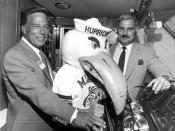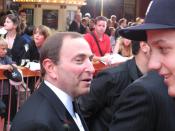In January of 2003, fans of the NHL had reason to be optimistic. With the leagueÃÂs active collective bargaining agreement between the playerÃÂs association (NHLPA) and the owners set to expire in September of 2004, NHLPA executive director Bob Goodenow and league commissioner Gary Bettman had a private meeting to open the negotiation process. This private meeting had information leaked to the public not long after with the general feeling of optimism abound. Over the next few months, parties and counsel from both sides would hold several closed door private meetings, though the public was not aware of progress or the general nature of the talks. With all but the most advanced fans ignorant to the bargaining process and the business side of hockey, there seemed no reason to be skeptical about the labor talks with the current dealÃÂs expiry date a year away still. In October of 2003, though, NHL fans everywhere were shocked with the results made public from the first public meeting between the two sides: the playersÃÂ union and the league were miles apart on an agreement, and the eleven and a half months remaining in the current deal may not be long enough to strike an agreement.
A work stoppage was imminent.
The sports industry generates nearly $200B USD annually across the world. Of this, 14 percent is based on advertising, 13 percent relates to merchandise, 13 percent pertains to spectator spending, 12 percent is attributable to operating expenses, and 10 percent is tacked on to gambling, with the remainder spread out across many small areas and trickle down industries. With such a large aggregate product for the industry, the fifth largest player on a continent should consider themselves in good shape. At the time of the NHL lockout, the league was in no position...


